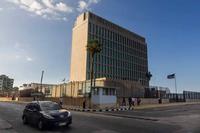Back in September, Newsday sparked a furious debate when it reported that Hezbollah had hacked into Israel's best-protected radios. At stake was more than that security of Israeli communications; American radios, which rely on similar technologies and designs, would also be at risk if the terror group was now able to listen in. Now, Aviation Week is weighing in, to say that the hack never happened.
Now, Aviation Week is weighing in, to say that the hack never happened.
Hezbollah is incapable of penetrating and exploiting the Israeli army's tactical radio systems as it claimed it did during the recent fighting in Lebanon, say senior U.S. electronics industry officials.
Even so, the militant Islamic organization is parlaying the results of a relatively common signals intelligence capability for analyzing communications traffic and intercepting cell-phone calls into a major psychological warfare victory, say U.S. officials. The success has been so complete that both Israel Defense Force (IDF) and U.S. Army users of advanced encrypted, frequency-hopping radios have raised doubts about the security of their communications.
"What they're really doing is a very good psychological operation," says a senior information operations specialist and industry executive. "One of the things you want to do is instill doubt. Hezbollah makes the pronouncement that they can read encrypted radios. They wanted the IDF troops to believe they weren't as invulnerable as they thought... They scored big time."
"What was more relevant was monitoring cell phones," [a] signals intelligence specialist tells the magazine, echoing what we said here when the Newsday story broke.
"Everybody out there has a cell phone. You see any picture of troops on the street in Baghdad and they've got a Blackberry or a cell phone. That's what is monitored... With something like a police radio scanner, if you're in the right frequency, you can listen to a cell phone."
Except... it's not that simple. The Northeast Intelligence Network got a hold of some IDF pictures, showing a Hezbollah hideout with equipment that's a whole lot more sophisticated than police scanners.
So what really happened? Many Defense Tech readers -- guys who know a thing or two about secure communications -- believe that Hezbollah never actually decrypted Israel's communications, which rely on "spread-spectrum" (bouncing from one frequency to the next) technologies. They didn't have to, as Nicholas Weaver noted:
Just some high speed triangulation of spread-spectrum sources (which actually, the spread-spectrum nature probably helps, just a bunch of antennas looking at ONE frequency with high-precision timing, and take advantage that it "hops on, hops off" cleanly to get start-end time for each signal source) can give you a huge amount of information as to where the communicating enemy is.
Av Week's specialist basically draws the same conclusion.
"It's not the hopping but the encryption that's very difficult, if not impossible, to break," the specialist says. "What they did is use direction finding [DF] to locate frequency hoppers. In fact, they're easier to DF than conventional signals because you have more shots at it. With a commercially available system, you can probably find at least one of the frequencies."








